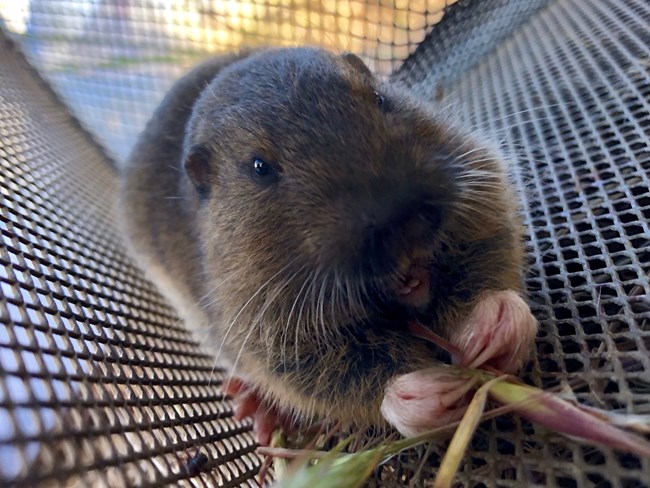
NPS Quiet morning strolls on Mt. Wanda offer you sightings of scampering gray fox and grazing mule deer. At twilight, you can spot coyotes, raccoons, and a rare chance to see bobcats and mountain lions. You may observe some of the following mammal species at the park: Brush mouse (Peromyscus boylii) Brush mice occur throughout California, and are one of the many small mammals monitored by park staff on Mt. Wanda. They eat nuts and seeds (especially acorns) and green vegetation. Brush mice are especially active during the summer months, and will dart around grasses and fallen leaves. Mule deer (Odocoileus hemionus): Mule deer are named for their large ears, which look like a mule’s ears. They have excellent hearing and eyesight – these senses warn them of any danger around. Mule deer are very common throughout the United States, and usually are active between dusk and dawn. Bobcat (Lynx rufus): The bobcat is a highly adaptable cat native to North America. They grow up to twice the size of an average housecat, and have tufted ears. Bobcats are carnivores, and eat rabbits, birds, mice, and squirrels. They are fierce hunters, and can pounce over 10 feet before attacking their prey. If you see a bobcat, do not approach it! Leave the area, and let a ranger know where you saw it. Mountain lion (Felis concolor): Also known as cougars or pumas, mountain lions are solitary animals native to North America and are most commonly sighted in the western US and Canada. They are most active at twilight and during the night, but are sometimes seen during the day. Although they look much like a housecat, but mountain lions can weigh as much as a human adult! Despite being so large, they are not classified with the “big cats” like lions or tigers because they are unable to roar. If you see a mountain lion, do not approach it! Leave the area, and let a ranger know where you saw it. Quick Reads & Blog Articles |
Last updated: July 2, 2020
